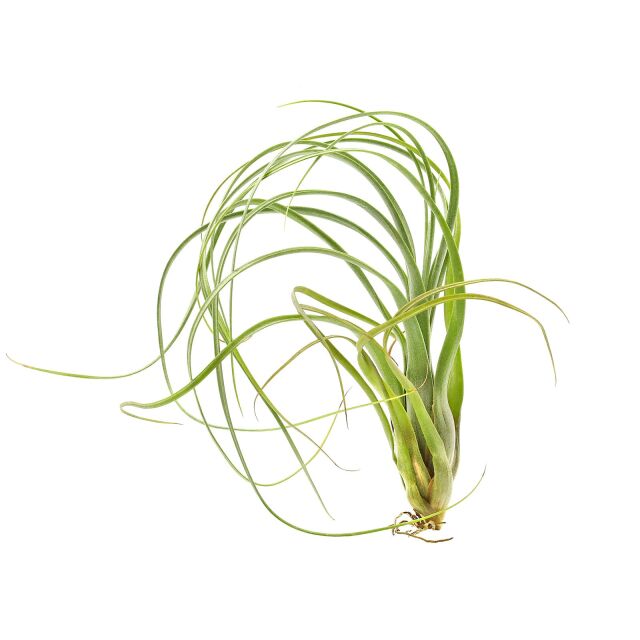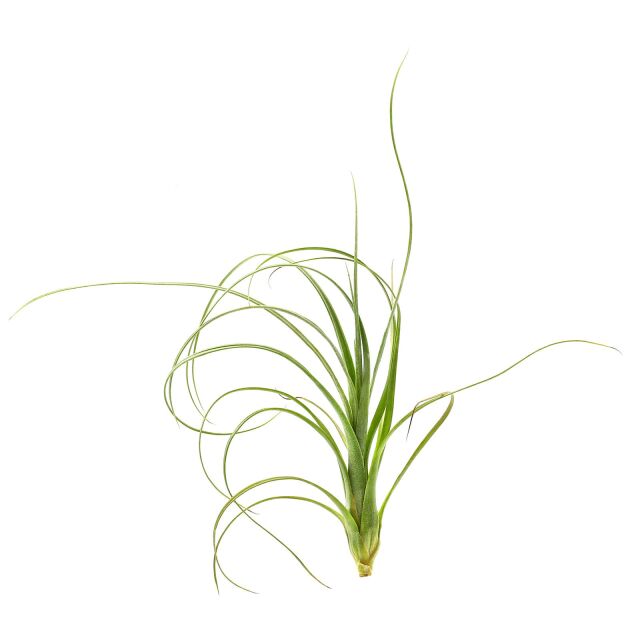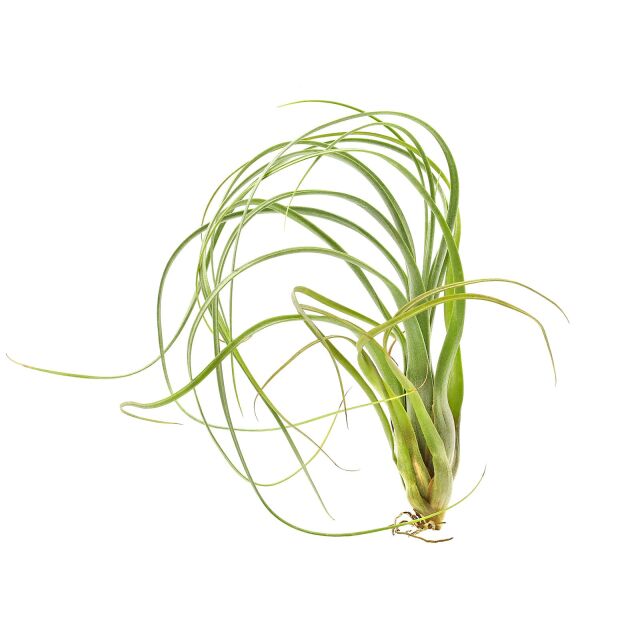Northern needleleaf




Tillandsia balbisiana
Northern needleleaf
- Epiphyte with pseudobulbs
- About 30 - 60 cm in height
- Suitable for semi-humid tropical terrariums
Item question
We’re here for you!
Please enter your question and e-mail and we’ll contact you as soon as possible. It usually takes us up to 24 hours during business days to respond.
Thank you for your question!
Thank you, we’ll get in touch!
Close window
You already sent us a question.
Please wait a few minutes
Description
Tillandsia balbisiana is a fairly widespread "air plant": from South Florida and Mexico, through the Caribbean and Central America to Colombia and Venezuela. It grows in tropical semi-humid forests as an epiphyte on trees. This approximately 30 to 60 cm tall plant develops a loose rosette of grey-green, recurved leaves that form a slender pseudobulb with their spoon-shaped widened leaf bases. The branched inflorescences produce a few purple, tubular flowers. At the base of the leaf rosette, one or a few plantlets (pups) appear. The main rosette dies after flowering, but growth continues through the pups.
Tillandsia balbisiana is counted among the "grey Tillandsia" type. They usually come from drier, exposed places such as treetops, dry forests or even deserts with a lot of fog. These atmospheric plants absorb water and nutrients from rain, mist and dust completely via the many absorbent scales on the leaves. The roots, if still present, serve as adhesive roots. In culture, such Tillandsias are tied or glued to materials such as wood or stones. The light requirement is rather high. Higher humidity is favourable, but the air should not be very humid all the time and stagnate, because the plants will rot if they cannot dry off. Therefore "Grey Tillandsias" are not well suited for rainforest terrariums, or they need a drier, well ventilated place in them. One sprays the plants with soft water dripping wet about two to three times a week. Dipping is also possible. After watering, the plant should be allowed to dry off. An orchid and Tillandsia fertiliser can be added with every second watering. Propagation is done by cutting off offspring when they are about one third the size of the mother plant.
This slightly larger growing Tillandsia has an interesting appearance with its slender leaf rosettes thickened at the bottom and irregularly curved leaves. It fits well in larger wet forest terrariums with thicker branches or stems.
Profile
| Tillandsia balbisiana | |
| Cultivation Options | Epiphytic, mounted, or free-floating |
| Growth Height | 30 - 50 cm |
| Temperature | 15 - 30 °C, frost-free |
| Humidity | 50 - 70 %, can tolerate higher levels briefly |
| Light Requirement | Bright, indirect light; can also tolerate direct morning sun |
| Watering | Regular spraying or brief soaking, avoid waterlogging |
| Fertilization | Every 4 weeks with special bromeliad or orchid fertilizer in very weak concentration during the growth period |
| Propagation | Offsets from the mother plant, seeds |
| Suitable for | Small to medium-sized terrariums, as part of epiphyte trees, in air gardens |
| Cultivation Options |
| Epiphytic, mounted, or free-floating |
| Growth Height |
| 30 - 50 cm |
| Temperature |
| 15 - 30 °C, frost-free |
| Humidity |
| 50 - 70 %, can tolerate higher levels briefly |
| Light Requirement |
| Bright, indirect light; can also tolerate direct morning sun |
| Watering |
| Regular spraying or brief soaking, avoid waterlogging |
| Fertilization |
| Every 4 weeks with special bromeliad or orchid fertilizer in very weak concentration during the growth period |
| Propagation |
| Offsets from the mother plant, seeds |
| Suitable for |
| Small to medium-sized terrariums, as part of epiphyte trees, in air gardens |
Terrarienpflanzen
Our terrarium plants give every terrarium an individual, natural atmosphere and at the same time provide a healthy environment for all terrarium inhabitants. Our wide range of tropical, subtropical and even arid plants are easy to combine and enhance any terrascape. Whether it's strong succulents, subtle tillandsias, eye-catching neoregelias or wonderful orchids - we offer terrarium plants for different terrascapes from rainforest to desert.
General information
Please choose a variant to see more information.
| Item no. |
|
| EAN | |
| Weight | |
| Shipping weight |
Customers ask customers
You have questions about this product? Ask other customer or our support team about this product!